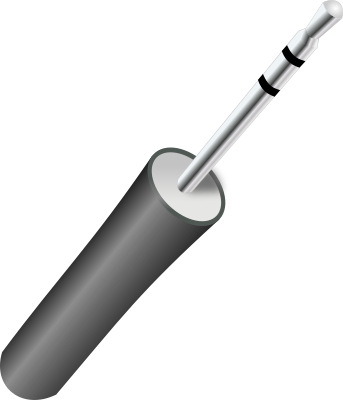In the portable electronics market, cell phones and MP3 players have greatly expanded the use of headsets for listening to music, making phone calls, and watching videos. Connecting headphones to the 3.5 mm plug used to be easy some years ago when headphones were just headphones (still then you might sometimes need to check sometimes impedance and sensitivity), but with recent introduction to new functionality to headsets (microphone, control buttons), thing have became more complicated. Not every headset is compatible with every device, not even close. When the number of contacts in 3.5 mm plug changes from three to four, things have become less standardized and less compatible. Some details on the issues can be found on my Android microphone connections posting. Without a cohesive audio-jack standard body, these accessories have diverged in ways that have made universal support difficult.
In light of this EeWeb blog has a worth to check out posting Fairchild’s Audio Jacks, Technology Worth Listening To and their on-line magazine has similar article Fairchild’s Audio Jacks. Over time, by adding function and features, electronic device manufacturers have implemented these headsets in many different configurations. Without a cohesive audio-jack standard body, these accessories have diverged in ways that have made universal support difficult. The ability to support multiple versions of headset devices on device is a complicated task for device designer. Fairchild’s Audio Jacks, Technology Worth Listening To article tells some ICs that can help in this.
Fairchild’s Audio Jacks, Technology Worth Listening To article starts with history: The early days of the ‘earphone’ was a monaural device very commonplace use of the 3.5mm audio jack with two contacts (impedance values could vary greatly). The next version of the earphone-style headset was the move to stereo implemented with three wires on 3.5 mm audio jack (typically 16-32 Ohms impedance but can be higher). The same output could also be used to drive such high impedance loads like audio amplifier RCA line level inputs, active speakers and noise-cancelling headphones (active devices with built-in amplifier).
When cell phones started using headsets the need for a microphone and hence a fourth wire was necessary, so the 4-pole 3.5mm jack was adopted. The camera industry also adopted this 4-pole connector to port audio and composite video from their devices. There also have been different implementations of the jack pin out, here are differences in the implementation of the headset itself, even using a similar pin out. Some devices can use the headphone cable as FM antenna. There are also some special cases where 3.5 mm jack could also be used as universal asynchronous receiver/transmitter (UART) or even USB.
Fairchild’s Audio Jacks, Technology Worth Listening To article says that there are two basic methods for audio-phone implementations, one from the Open Mobile Terminal Platform (OMTP), and the other is the Cellular Telecommunications Industry Association (CTIA) standard in North America. Both are in use today and mobile device manufacturers would like their devices to work for both easily, which has been a major driver in the need for Audio Jack Detection products. Image of those connection pinouts from A note on headset standards: OMTP, AHJ and Apple article:


1 Comment
Tomi Engdahl says:
Audio Jack Configuration Switch Matrix
http://www.eeweb.com/company-news/nxp/audio-jack-configuration-switch-matrix/
The NCX8200 is an audio jack configuration switch matrix for headphones with integrated microphone and remote control buttons. It supports AHJ and OMTP headset jack pinouts which allows reconfiguration of the GND. Its sense path to GND supports quasi-differential amplifier configuration. The device contains Human Body Model compliant ESD protection diodes rated 8 kV at all pins.
NCX8200UK Audio jack configuration switch matrix
http://www.nxp.com/products/logic/comparators/NCX8200UK.html?utm_source=eeweb&utm_medium=tech_community&utm_term=news&utm_content=nxp&utm_campaign=source